Busy kitchens need speed and precision. Vegetable cutters solve both problems. They save time and ensure perfect cuts every time.
Vegetable cutters are crucial for commercial kitchens because they dramatically reduce prep time, ensure uniform cuts for even cooking, and minimize food waste through efficient processing.
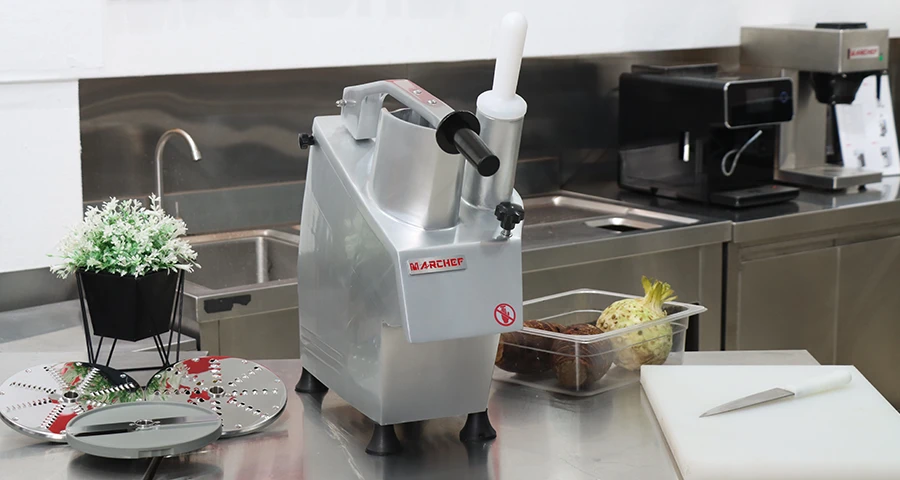
If you run a kitchen, you know every second counts. Let’s explore how vegetable cutters can transform your workflow.
What Is the Use of a Vegetable Cutter?
Chopping vegetables by hand takes forever. A vegetable cutter does it in seconds.
A vegetable cutter quickly processes large volumes of vegetables into uniform shapes, saving time, reducing labor costs, and improving food consistency for professional kitchens.
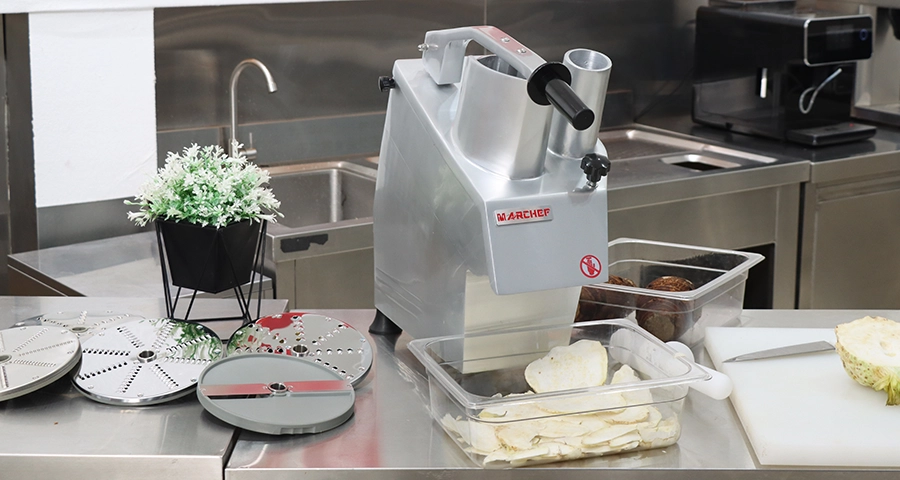
Core Functions of a Vegetable Cutter
- Speed: Processes 10x faster than manual cutting.
- Consistency: Delivers identical cuts for even cooking.
- Versatility: Handles carrots, potatoes, onions, and more.
Types of Cuts Available
| Cut Type | Best For | Blade Example |
|---|---|---|
| Julienne | Stir-fries, salads | Thin, matchstick |
| Dice | Soups, stews | Square cubes |
| Waffle | Garnishes, presentation | Crisscross pattern |
Why Chefs Rely on Them
- Saves labor: Frees staff for other tasks.
- Reduces waste: Precision cuts maximize yield.
- Enhances safety: Minimizes knife-related injuries.
How to Choose the Best Vegetable Chopper?
leading paragraph:
Not all vegetable cutters are equal. Picking the wrong one wastes money and frustrates your team.
snippet paragraph:
Choose a vegetable cutter based on volume needs, cut versatility, durability, and ease of cleaning to ensure it meets your kitchen’s demands without slowing operations.
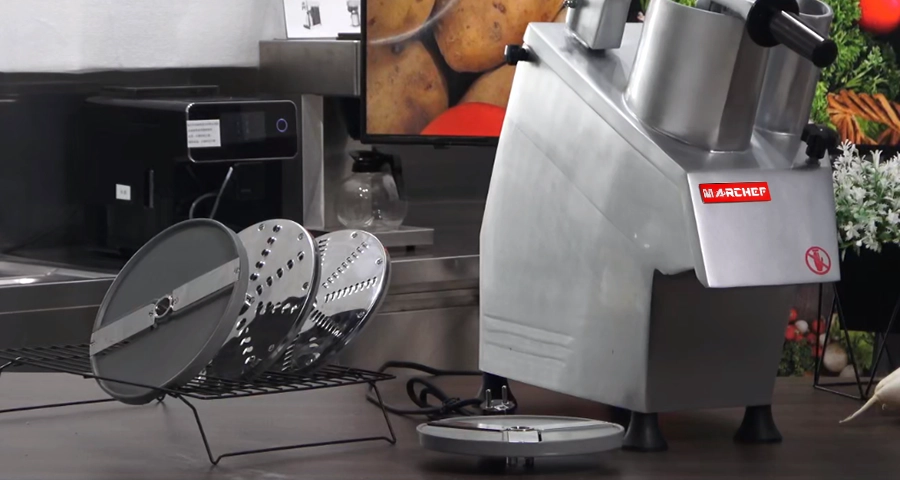
Key Selection Criteria
- Capacity
- Small kitchens: 5–10 kg/hour
- Large operations: 20+ kg/hour
- Blade Options
- Interchangeable blades for flexibility.
- Stainless steel for longevity.
- Ease of Cleaning
- Dishwasher-safe parts save time.
- Avoid models with hard-to-reach crevices.
- Durability
- Look for commercial-grade motors.
- Check warranty (2+ years ideal).
Top Brands Compared
| Brand | Price Range | Best For |
|---|---|---|
| MARCHEF | $$$ | High-volume kitchens |
| Robot Coupe | $$$$ | Precision cutting |
| Buffalo | $$ | Budget-friendly |
What Is the Best Knife Shape for Cutting Vegetables?
leading paragraph:
Blade shape affects speed and results. The wrong choice means uneven cuts and wasted produce.
snippet paragraph:
The best knife shape depends on the vegetable and desired cut: chef’s knives for general chopping, santoku for precision, and serrated for tomatoes or bread.
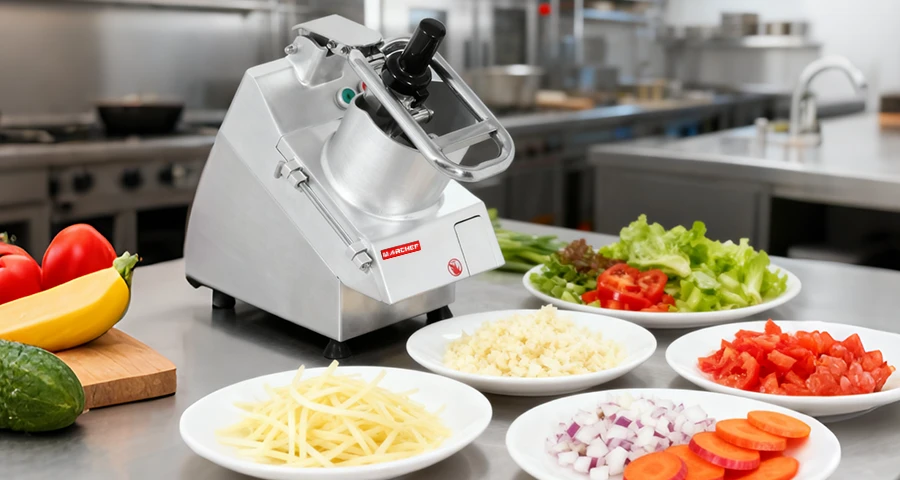
Blade Breakdown
- Chef’s Knife:
- Versatile for dicing, mincing.
- 8–10″ blade ideal for most tasks.
- Santoku Knife:
- Shorter, lighter for delicate work.
- Hollow edges prevent food sticking.
- Serrated Knife:
- Essential for soft skins (tomatoes).
- Clean slices without crushing.
Vegetable-Specific Recommendations
| Vegetable | Ideal Blade | Why? |
|---|---|---|
| Carrots | Chef’s knife | Force for hard texture |
| Herbs | Santoku | Precision mincing |
| Lettuce | Serrated | Clean tears, not bruises |
What Are the Benefits of a Vegetable Cutter?
A vegetable cutter isn’t just a tool—it’s a game-changer for efficiency, safety, and profit.
Vegetable cutters boost kitchen productivity by speeding prep, reducing waste, ensuring consistency, and lowering labor costs, making them indispensable for commercial operations.
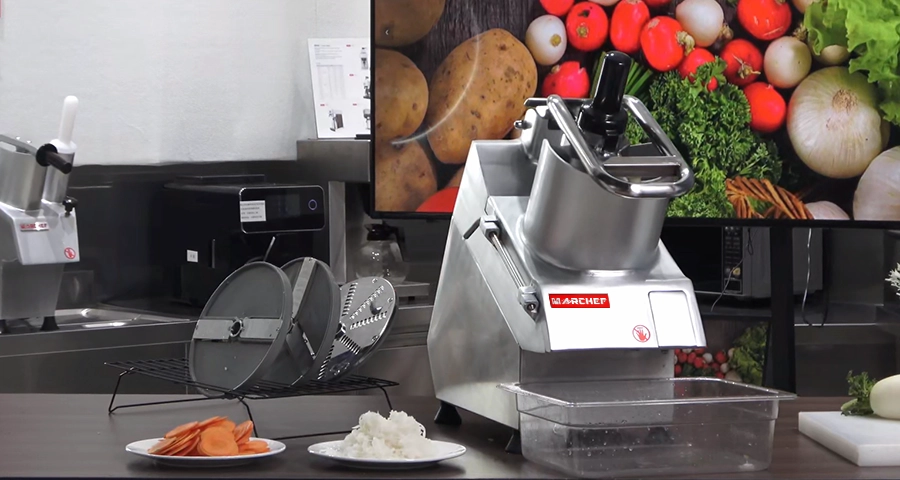
Tangible Advantages
- Time Savings
- Cuts prep time by 70%.
- Example: 10 lbs of onions in 3 minutes vs. 15 by hand.
- Cost Efficiency
- Reduces labor hours.
- Less food waste = higher profit margins.
- Consistency
- Uniform cuts improve cooking results.
- Enhances plate presentation.
Long-Term Perks
- Staff safety: Fewer knife injuries.
- Space optimization: Compact models fit tight kitchens.
- Customer satisfaction: Faster service, better dishes.
Conclusion
Vegetable cutters save time, money, and effort while elevating food quality—essential for any commercial kitchen aiming for efficiency and consistency.
